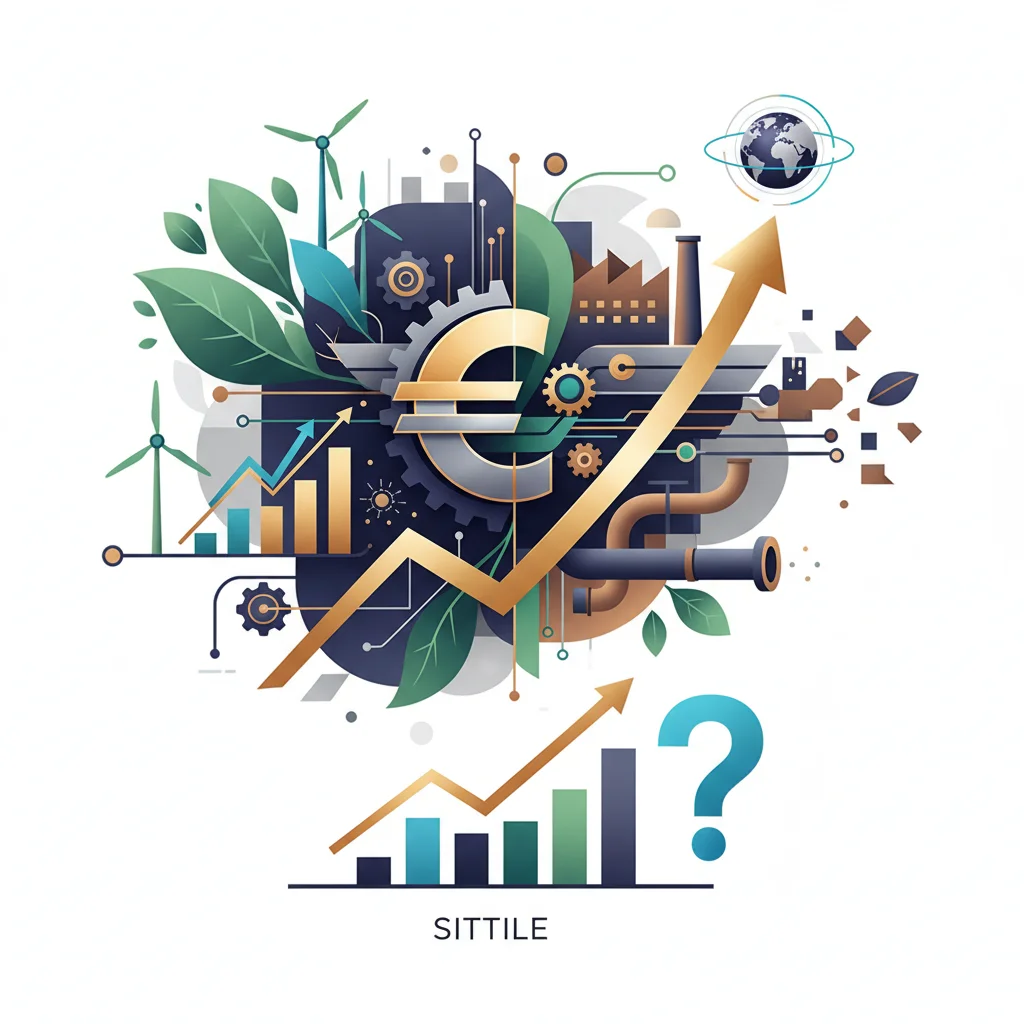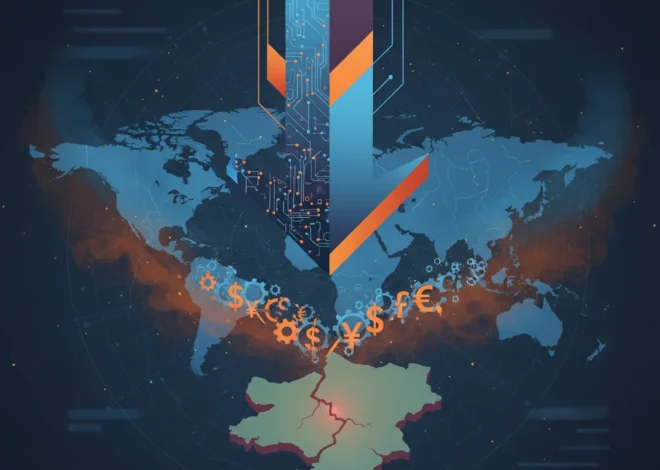
Beyond Green vs. Brown: Why Europe’s Decarbonization Strategy Needs a Financial Rethink
The Trillion-Euro Question: Is Europe’s Green Strategy Smart Finance?
The European Union’s Green Deal is one of the most ambitious economic and environmental projects in human history. With a goal of achieving climate neutrality by 2050, the bloc is mobilizing trillions of euros in public and private capital to reshape its entire economy. The mission is clear, the stakes are monumental, and the central strategy in the world of finance has been to create a simple binary: funnel capital towards “green” assets and away from “brown” ones. On the surface, it’s a logical approach. To build a sustainable future, we must fund the solutions and starve the problems.
But what if this black-and-white approach is fundamentally flawed? What if, in our rush to label and categorize, we are inadvertently making the transition harder, less efficient, and more economically disruptive? This is the provocative argument gaining traction among financial economists and market experts. In a recent letter to the Financial Times, Professor Thanos Verousis of Vlerick Business School articulated a powerful critique: our financial system is focused on rewarding the destination (being green) rather than financing the crucial, messy, and absolutely essential journey of getting there. This perspective suggests that the current path, while well-intentioned, may be a roadblock to genuine decarbonization, impacting everything from the stock market to corporate investing strategies.
This post delves into this critical debate. We will explore the limitations of the EU’s current green-labeling strategy, analyze the case for a more pragmatic, market-driven approach, and outline what a financial architecture designed for real-world transition could look like. For business leaders, investors, and policymakers, understanding this nuance isn’t just an academic exercise—it’s key to unlocking a transition that is both environmentally effective and economically viable.
The Green Dichotomy: The EU’s Playbook and Its Unintended Consequences
At the heart of the EU’s sustainable finance strategy is the EU Taxonomy, a complex classification system designed to define which economic activities can be considered environmentally sustainable. The goal is to create a common language for investors, preventing “greenwashing” and directing the massive flows of capital needed to meet the targets of the European Green Deal. This has led to an explosion in ESG (Environmental, Social, and Governance) investing, with financial products—from mutual funds to corporate bonds—being branded as “green” to attract capital.
The intended effect is a powerful market signal: companies aligned with the taxonomy gain access to cheaper capital, a higher valuation on the stock market, and a stronger brand reputation. Conversely, “brown” industries—those in sectors like cement, steel, chemicals, and traditional energy—face divestment pressure, higher borrowing costs, and public scrutiny. This is the stick-and-carrot approach on a continental scale.
However, this binary logic is beginning to show its cracks. Here are the core problems:
- It Punishes the Transitioners: The world cannot function without steel, cement, or chemicals. These industries are foundational to our economy, including the manufacturing of wind turbines, solar panels, and electric vehicles. Simply starving them of capital doesn’t make them disappear; it makes it prohibitively expensive for them to invest in the very technologies needed to decarbonize. A steel manufacturer with a credible plan to transition to green hydrogen-based production needs more capital, not less.
- It Creates Perverse Incentives: The focus on a “green” label can incentivize companies to sell off their carbon-intensive assets rather than clean them up. A large energy company might sell a coal plant to a private equity firm that operates with less transparency and public pressure. The seller’s portfolio looks greener, but the planet is no better off—in fact, the problem has just been moved into the shadows.
- It Misunderstands Risk and Return: The greatest environmental and financial returns may not come from investing in a company that is already 100% green, but from financing a high-emitting company’s credible and aggressive transition. As Professor Verousis argues, the market should be pricing the “brown-to-green” trajectory, not just the static green label. This is where the real alpha, both for the climate and for investors, lies.
The current system risks creating a two-tiered economy: a small, pristine “green” sector and a vast, capital-starved “brown” sector left to fend for itself, delaying a holistic economic transformation. The Dragon's Wallet: How China's State-Backed Venture Capital is Reshaping Global Technology & Finance
Pricing the Journey, Not Just the Destination
The core of the proposed shift is to move from a static, binary classification to a dynamic, continuous one. Instead of asking “Is this company green?”, the market should ask, “How fast and how credibly is this company becoming greener?” This fundamentally changes the incentive structure and aligns the power of the financial markets with the physics of decarbonization.
In this model, a company’s cost of capital—the rate it pays for borrowing or for equity—would be directly linked to its progress on a pre-defined decarbonization pathway. A cement company that successfully implements a carbon capture project would see its borrowing costs decrease. A shipping firm retrofitting its fleet to run on ammonia would be rewarded by the market. This creates a powerful, self-reinforcing loop where climate progress translates directly into financial performance.
Let’s compare the two approaches with a simple breakdown:
| Financial Mechanism | Binary “Green Label” Approach | Dynamic “Transition Finance” Approach |
|---|---|---|
| Primary Focus | Categorizing companies as “Green” or “Brown.” | Measuring and rewarding the rate of decarbonization. |
| Capital Flow | Flows from Brown to Green sectors. | Flows to companies across all sectors with credible transition plans. |
| Incentive for Emitters | Divest assets to appear “greener.” Minimal incentive to invest in deep decarbonization. | Strong financial incentive to invest in transition tech to lower cost of capital. |
| Key Risk | “Greenwashing” and capital starvation of essential industries. Carbon leakage. | Complexity in measurement, reporting, and verification (MRV). Requires sophisticated data. |
| Economic Impact | Potential for economic disruption and job losses in “brown” sectors. | Supports a managed, economy-wide transition, preserving industrial capacity. |
This “Transition Finance” model is not about giving polluters a free pass. It’s about creating a robust framework where commitments are backed by data, progress is rigorously tracked, and financial rewards are tied to tangible results. It turns the entire economy into a decarbonization engine, rather than just a small, designated “green” corner of it.
The "Dodgy Gas Fitter" Fallacy: Why Systemic Risk is the Biggest Threat You're Not Tracking
The New Financial Architecture for a Pragmatic Transition
So, how do we build a financial system that can price the journey? It requires new tools, new products, and a new mindset from both the banking sector and capital markets. Several key components are already emerging:
- Sustainability-Linked Bonds & Loans: Unlike “Green Bonds,” where proceeds are earmarked for specific green projects, Sustainability-Linked Bonds (SLBs) are tied to the issuer’s overall performance against defined ESG targets. If a company meets its emissions reduction goals, it pays a lower coupon rate to investors. This instrument, highlighted by the International Capital Market Association (ICMA), directly links financing costs to climate action at the corporate level. Similarly, banks are increasingly offering Sustainability-Linked Loans (SLLs) with interest rates that ratchet down as borrowers hit their targets.
- Advanced ESG Data and Analytics: The transition model lives or dies on the quality of its data. This is where financial technology becomes critical. Startups and established data providers are using AI, satellite imagery, and IoT sensors to move beyond self-reported corporate data. They can track real-world emissions, verify the operational status of a carbon capture facility, or monitor deforestation in a supply chain, providing the robust data needed for dynamic trading and investing decisions.
- The Potential of Blockchain: For a system based on trust and verification, distributed ledger technology, or blockchain, offers a compelling solution. Imagine a corporate bond where emissions data is reported in real-time from verified sensors onto an immutable ledger. The bond’s coupon payment could be automatically adjusted by a smart contract based on this data, creating a transparent and tamper-proof link between performance and financing. This would eliminate greenwashing and build unparalleled trust for investors.
- A More Nuanced Regulatory Framework: Regulators, including the EU, need to evolve their frameworks to recognize and reward transition efforts. This means moving beyond the strict Taxonomy to create standards for credible transition plans. The Glasgow Financial Alliance for Net Zero (GFANZ) is one of many international bodies working on frameworks for what constitutes a viable, science-based transition plan, which can guide regulators and investors alike.
The Path Forward: A Call for Pragmatism for Investors and Leaders
Embracing a transition-focused approach is not without its challenges. It is inherently more complex than a simple green/brown labeling system. It demands a higher degree of sophistication from investors, better and more standardized data from companies, and a flexible mindset from regulators. The risk of “transition-washing”—where companies set weak targets to access cheaper capital—is real and requires robust verification mechanisms.
However, the opportunity is far greater than the challenge. For investors, it unlocks a vast new universe of opportunities in the companies that will form the backbone of the future industrial economy. For business leaders in hard-to-abate sectors, it provides a clear, financeable pathway to a sustainable future, allowing them to make long-term investments with the support, rather than the scorn, of the financial community. For the broader economy, it promises a more orderly and just transition, one that modernizes its industrial base rather than dismantling it.
Milan's Hidden Courtyards: A Blueprint for Finding Alpha in Today's Economy
The goal of a net-zero Europe is non-negotiable. But the strategy to get there must be grounded in financial and economic reality. The simple narrative of “good” green versus “bad” brown is a comforting fiction; the reality is a spectrum of progress. By building a financial system that can see, price, and fund that spectrum, we can unleash the full power of the market to drive one of the greatest economic transformations in history. It’s time to stop just funding the finish line and start financing the race.


